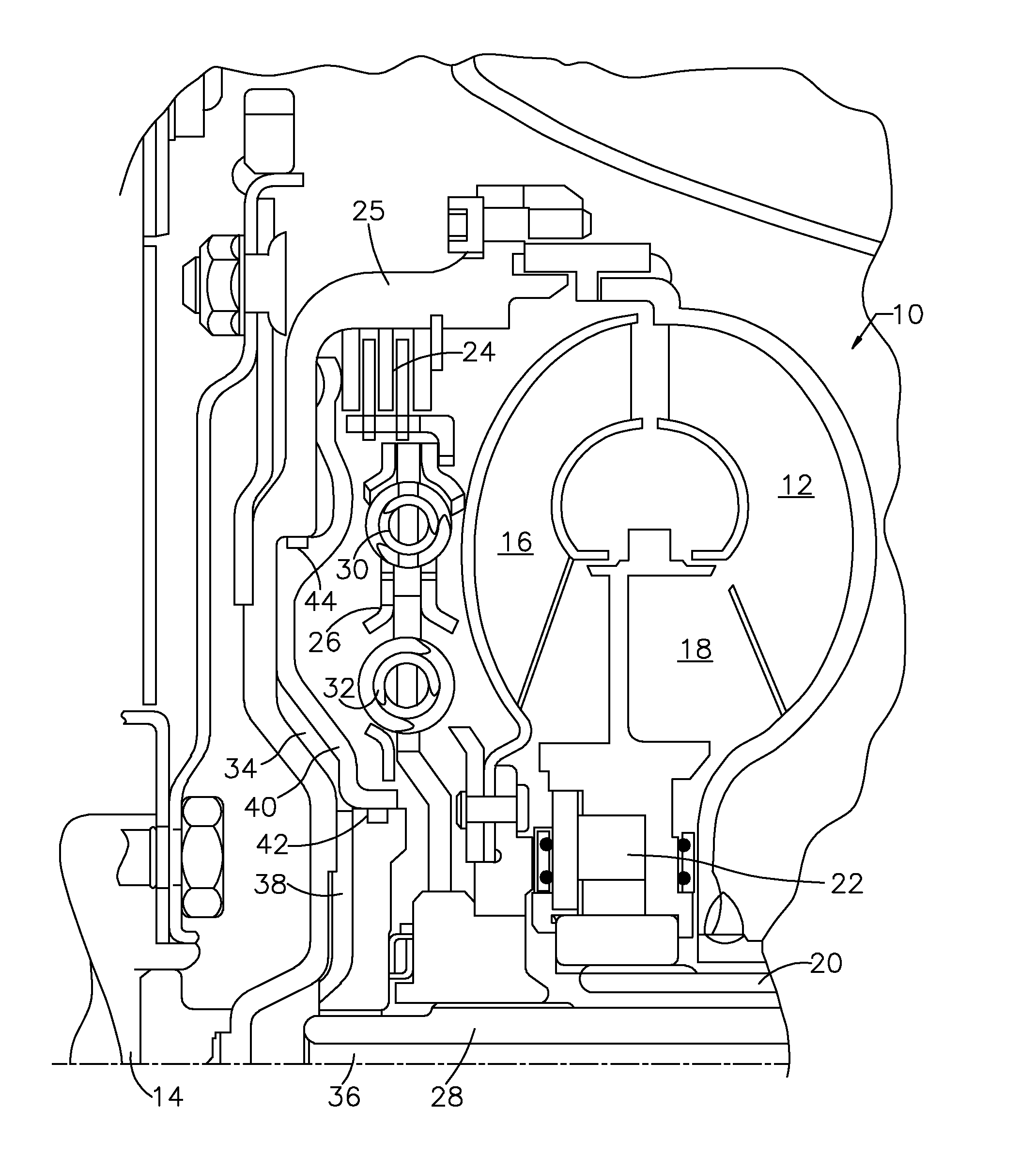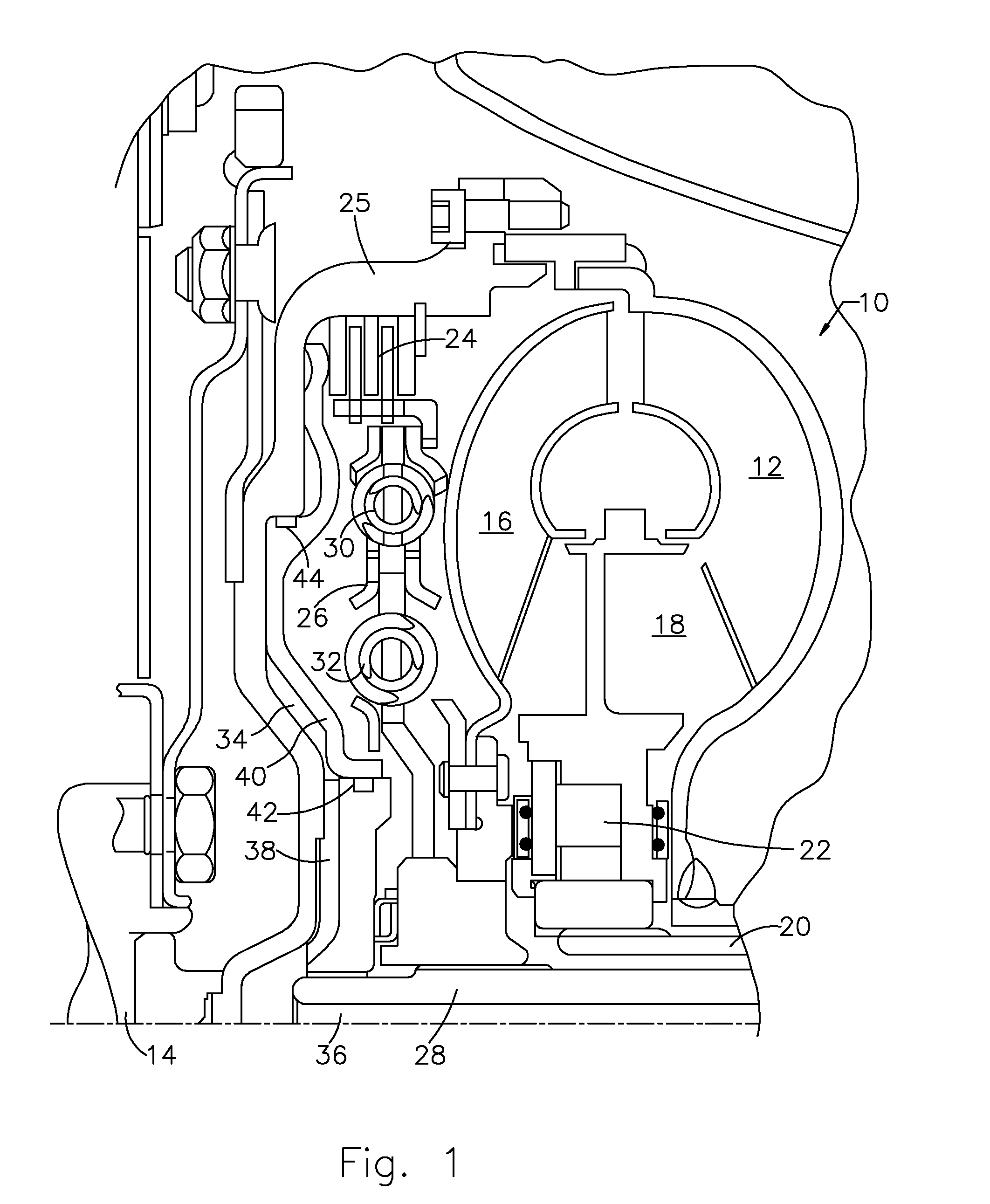Transmission Torque Converter Clutch Control
a technology of transmission torque converter and clutch, which is applied in the direction of rotary clutches, fluid couplings, gearings, etc., can solve the problems of fuel economy reduction, reduce the torque capacity of the clutch, reduce the magnitude of negative clutch slip, and increase the torque capacity
- Summary
- Abstract
- Description
- Claims
- Application Information
AI Technical Summary
Benefits of technology
Problems solved by technology
Method used
Image
Examples
Embodiment Construction
[0016]Referring first to FIG. 1, a torque converter 10 includes a bladed impeller wheel 12 connected to the crankshaft 14 of an internal combustion engine, a bladed turbine wheel 16, and a bladed stator wheel 18. The impeller, stator and turbine wheels define a toroidal fluid flow circuit, whereby the impeller is hydrokinetically connected to the turbine. The stator 18 is supported rotatably on a stationary stator sleeve shaft 20, and an overrunning brake 22 anchors the stator to shaft 20, thereby preventing rotation of the stator in a direction opposite the direction of rotation of the impeller, although free-wheeling motion in the opposite direction is permitted.
[0017]The torque converter assembly 10 includes a lockup clutch 24 located within a torque converter housing 25, which is secured to the impeller 12. The lockup clutch 24 alternately engages and disengages a drive connection between the housing 25 and a damper 26. The damper 26 is located in a torque path between clutch 24...
PUM
 Login to View More
Login to View More Abstract
Description
Claims
Application Information
 Login to View More
Login to View More - R&D
- Intellectual Property
- Life Sciences
- Materials
- Tech Scout
- Unparalleled Data Quality
- Higher Quality Content
- 60% Fewer Hallucinations
Browse by: Latest US Patents, China's latest patents, Technical Efficacy Thesaurus, Application Domain, Technology Topic, Popular Technical Reports.
© 2025 PatSnap. All rights reserved.Legal|Privacy policy|Modern Slavery Act Transparency Statement|Sitemap|About US| Contact US: help@patsnap.com



